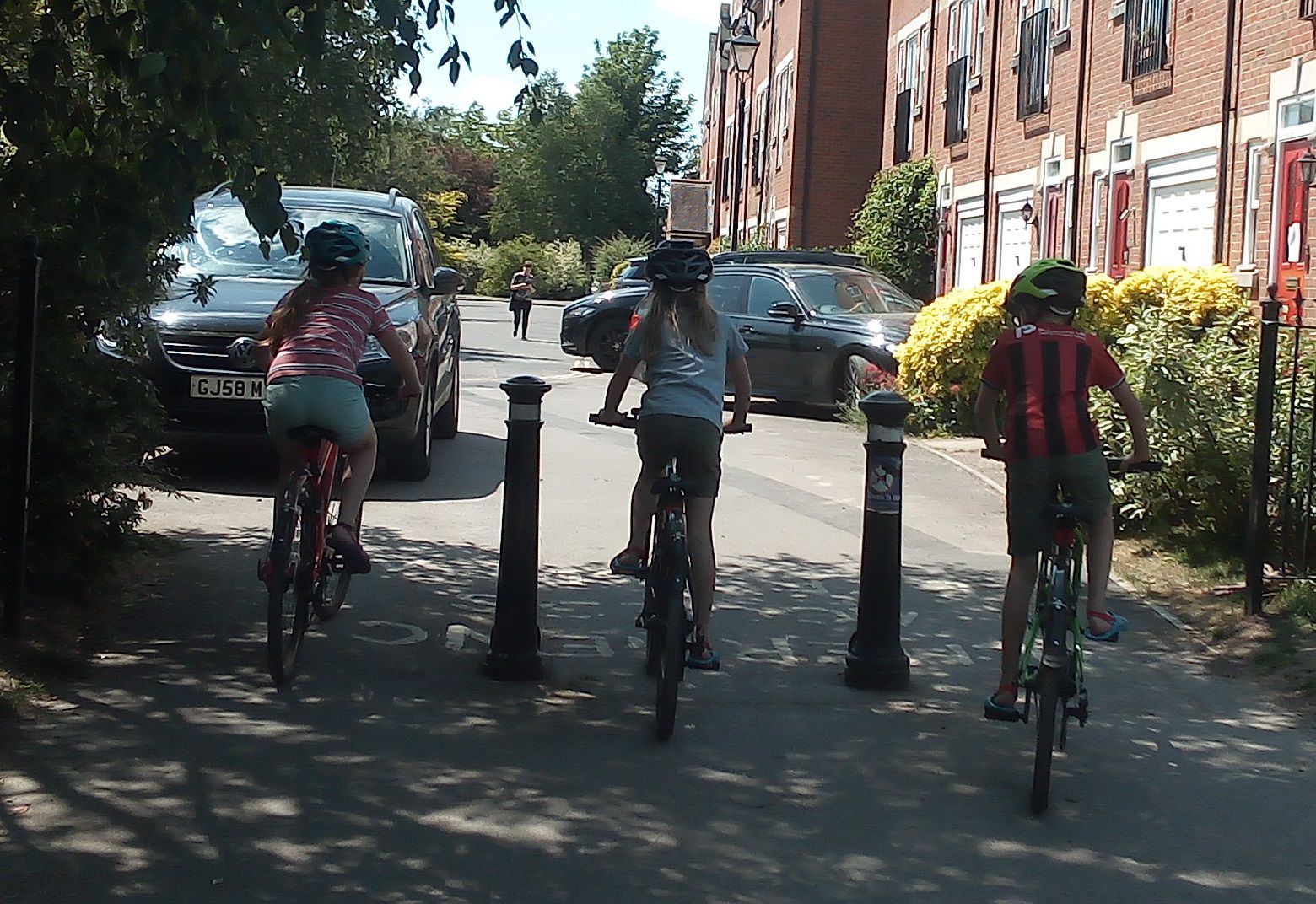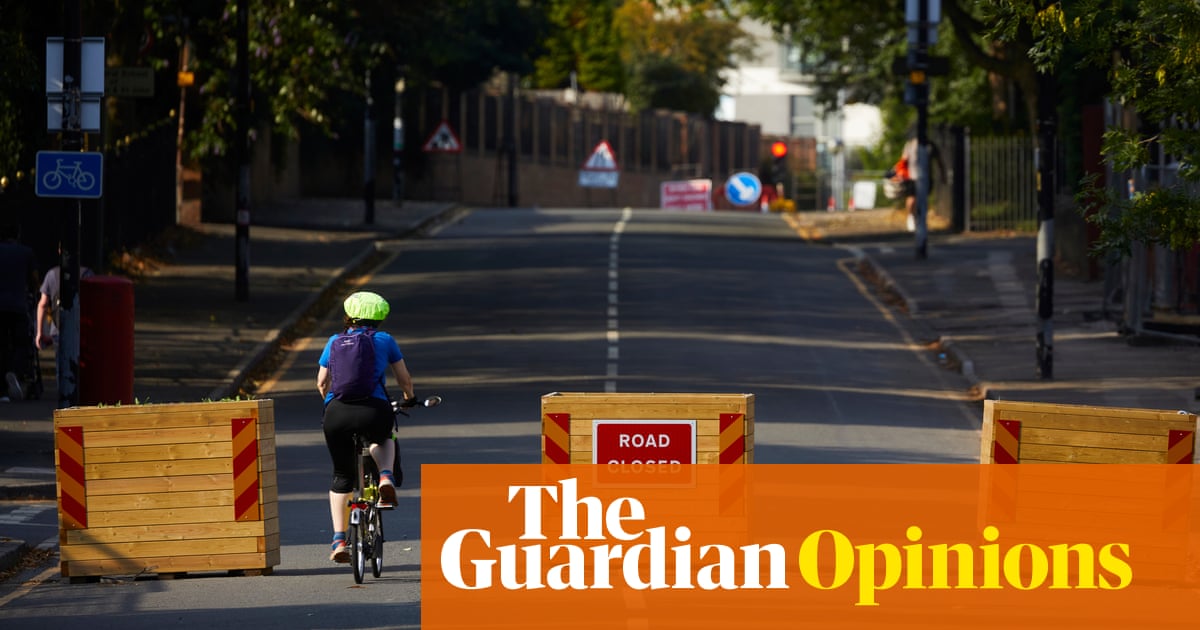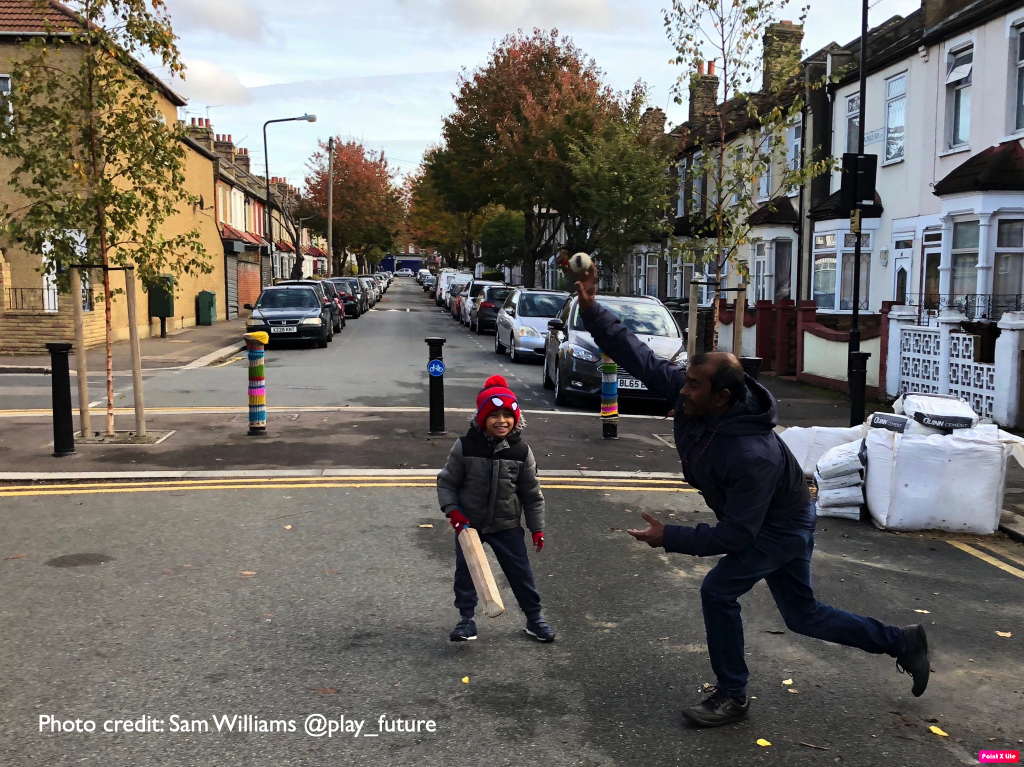Is local kids’ independence the price for drivers’ convenience?

Long queues of parents practising social distancing at the school gates has become an everyday sight since children returned to school after lockdown and is likely to remain so for a good while yet.
The pandemic has changed the school run for many families, bringing questions about our shared roads and public spaces into sharper focus than perhaps ever before. Last year, councils up and down the country introduced emergency low traffic neighbourhoods and School Streets in an effort to facilitate social distancing and enable more families to walk, scoot or cycle the school run and improve road safety and air quality outside the school gates.
In the ongoing national and local discussions about “liveability”, “low traffic neighbourhoods” and “LTNs”, we’re hearing plenty about what adults think and would ideally like to happen with our streets. So much so that the perspective of the youngest residents of our neighbourhoods is mostly overlooked. So, with more youngsters out and about again as lockdown eases, perhaps we should explore how the design of our street network shapes the lives of our children and grandchildren, as well as those of their parents and carers.
Many of us can remember a time when walking or cycling to school was normal and even expected of us as kids. How many of today’s children can imagine a situation where it’s quicker and easier to walk, scoot or cycle their everyday journeys than to be driven? And what about the ease of calling round to play with the other kids on your street? How about travelling to school under your own steam every day and – as you get older – feeling safer walking to school or visiting your friends on your own?
Meanwhile, us adults are concerned about the safety of allowing our children to travel around the area alone due to traffic danger. So time-strapped parents and carers remain stuck in a cycle of either having to accompany their children to walk or cycle wherever they need to go or transporting them there in their cars – and so the cycle goes on.
The reports are in
A Policy Studies Institute report on children’s mobility (2015) highlighted striking changes in children’s independent mobility over recent decades. For example, in 1971 in England, 55% of children under 10 were allowed to travel alone to places other than school that were within walking distance; by 2010, almost no children under 10 were allowed to do so. The same report found a positive correlation between the scores in Unicef’s 2013 comparative overview of child well-being in 29 different countries and children’s degree of freedom to travel and play without adult supervision in those countries, as well as a positive link between the educational attainment of children and children’s degree of freedom to travel and play without adult supervision in those countries.
In 1971 in England, 55% of children under 10 were allowed to travel alone to places other than school that were within walking distance; by 2010, almost no children under 10 were allowed to do so.
In Germany, for example, pre-school children complete a 12-step road safety course with the expectation that they’ll be able to walk to school unaccompanied, supported by school crossing supervisors (equivalent to our ‘lollipop’ men and women), by the time they start school aged from 5 to 7. Since the 1970s, this approach has dramatically reduced the number of children injured or killed as pedestrians each year. The aim is firstly to improve children’s learning of road awareness and traffic sense by ensuring they are active rather than passive road users from an early age, and secondly to reduce the need for parents to drive their children to school.
Must do better…
While we’re rushing around transporting our children to somewhere else, it’s easy to miss what’s happening immediately outside our front doors and the impact this has on our everyday lives. The design of our streets has the capacity to limit or expand our young people’s access to the world that is their own neighbourhood and home city.
The principle of no through-traffic has existed in many parts of our street network for decades and is now designed into newer residential areas as standard, including in and around Headington. There are good reasons for that. Safer streets, cleaner air and independent mobility shouldn’t be seen as something aspirational or ‘nice to have’, but rather as a basic standard that all children and young people should be entitled to expect on the streets around where they live. We hope you’ll join us in calling for the whole of Headington to be brought up to the standard that most other parts of Oxford take for granted for our young people and all road users.
The design of our streets has the capacity to limit or expand our young people’s access to the world that is their own neighbourhood and home city.
These short articles, films and podcasts explore the many issues the current discussions about LTNs throw open for young people, ranging from their practical everyday transport needs and the quality of the air they breathe to their physical fitness, safety and autonomy outside the home, social and practical skills and mental health and well-being.
Our kids’ shrinking horizons
What is a city for?
Rob Newman recalls how he walked to primary school on his own aged 7, ably assisted by the lollipop lady, and contrasts that with today’s children: “Children know they have lost the battle with the motor car, but it wasn’t a fair fight.”

For our children’s sake, let’s rid Britain’s residential streets of traffic
LTNs have been proven to work. Now let’s roll them out and reclaim the roads from the rat-run, argues Chris Boardman (then Greater Manchester’s cycling and walking commissioner, now its first Transport Commissioner)…

How children lost the right to roam in four generations
David Derbyshire reports on a case study contrasting the freedoms enjoyed by four generations of one Sheffield family…

Safe streets, clean air, active travel – a right, not a privilege
Our streets, our journeys
In this article and short film, Rachel Toms, board member for the London’s Child Obesity Taskforce, spells out the benefits to children of improving streets for active journeys like walking and cycling…

Why liveable cities are kid-friendly cities
Dublin parent Lauren Tuite laments on how the perspective of parents of small children seems largely absent in the pedestrianisation debate, “Probably because most of us are too exhausted and stressed to contribute.”

Are Low Traffic Neighbourhoods the next big step for children’s freedom?
Lucy Colbeck of Playing Out considers the pros and cons of LTNs – and how play streets might help pave the way…

A deadly war is being waged on our children by drivers – it is time to hit the brakes
A child is killed on Britain’s streets nearly every week by a motor vehicle, while the impact of emissions on asthma and lung damage is unconscionable. We must make a stand, says Donnachadh McCarthy…

Oxford air needs your care!
Windmill Primary School in Margaret Road was the recent winner of the school banner competition that Oxford City Council organised with Oxford Friends of the Earth to raise awareness about air pollution…







